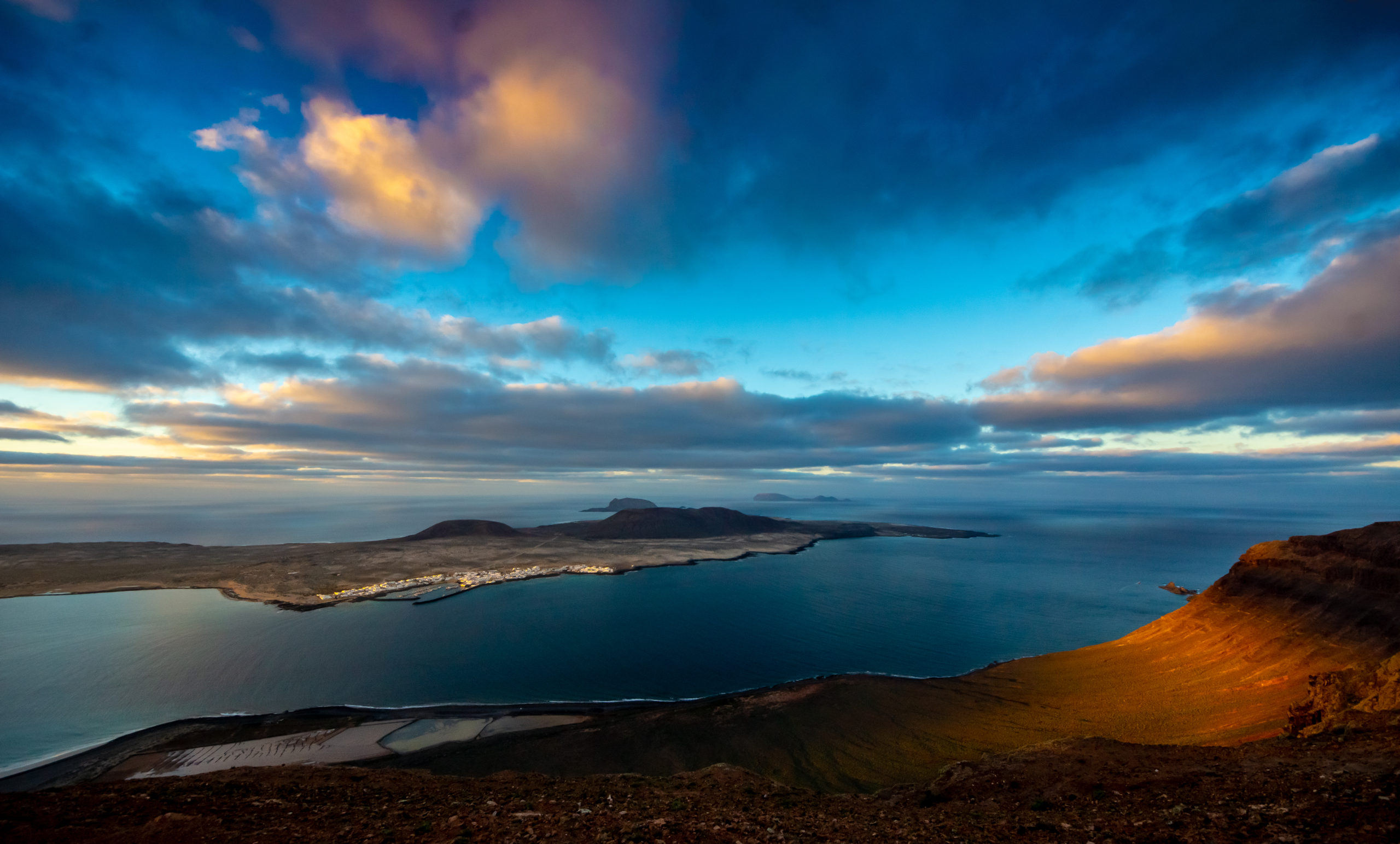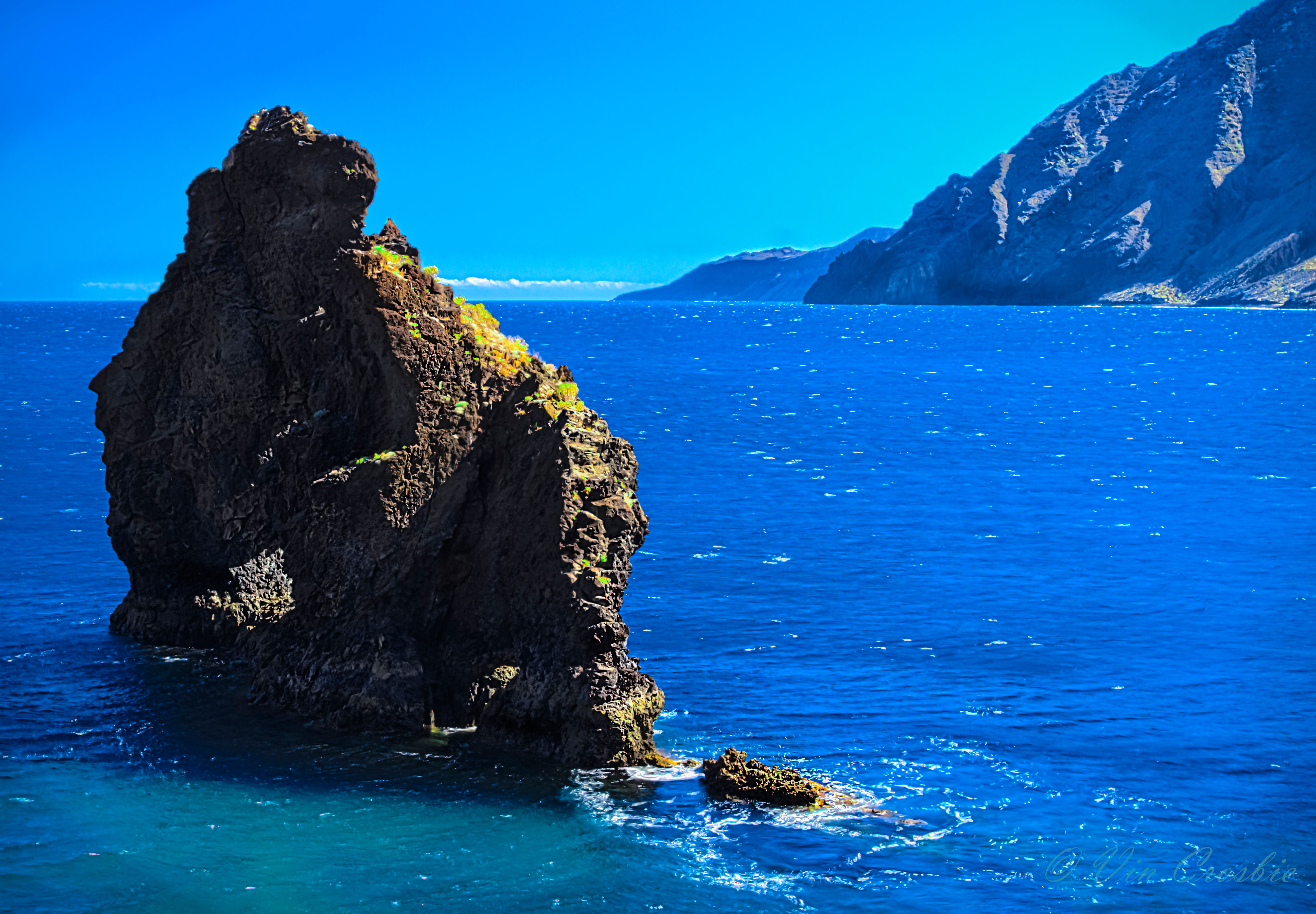The Greatest Change of All
Unless there is a nuclear world war or a pandemic deadlier than COVID-19 sometime this century, advances in technology will allow humanity this century to achieve the greatest change in history: the end of scarcity.
Scarcity has existed since since before humans existed. Scarce food. Scarce fresh water. Scarce shelter. Scarce money once currency replaced barter. Although 900 million humans have risen out of poverty during the past 30 years, 700 million, a tenth of humanity, still find food, fresh water, shelter, and income of even the equivalent of a dollar per day, scarce.
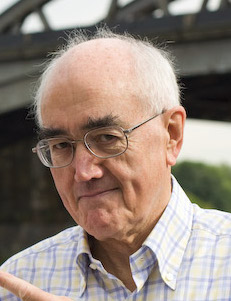
And even though most of the other 6 billion humans might still consider many of those things to be relatively scarce, the concept of a world soon without hunger, homelessness, or a want for basic necessities isn’t a dream, fantasy, or science fiction anymore.
Scarcity has existed since since before humans existed. Scarce food. Scarce fresh water. Scarce shelter. Scarce money once currency replaced barter. Although 900 million humans have risen out of poverty during the past 30 years, 700 million, a tenth of humanity, still find food, fresh water, shelter, and income of even the equivalent of a dollar per day, scarce. And even though most of the other 6 billion humans might still consider many of those things to be relatively scarce, the concept of a world soon without hunger, homelessness, or a want for basic necessities isn’t a dream, fantasy, or science fiction anymore.
James Burke, tells you why. In a 28-minute radio broadcast on the British Broadcasting Corporation during New Year’s Day 2018, the British author, television producer, and historian of science historian describes what will soon become the biggest change to humanity in 10,000 years. And how the economics of abundance will disrupt civilization.
If you don’t have time to listen to Burke explain it all by voice, you can read what he says here.
American ‘Progressives’ Needn’t Defend Themselves
As the political theorist Cory Robin observed in his 2011 book, The Reactionary Mind: Conservatism from Edmund Burke to Sarah Palin:
“People on the left often fail to realize this, but conservatism really does speak to and for people who have lost something. It may be a landed estate or the privileges of white skin, the unquestioned authority of a husband or the untrammeled rights of a factory owner. The loss may be as material as money or as ethereal as a sense of standing. It may be a loss of something that was never legitimately owned in the first place; it may, when compared with what the conservative retains, be small. Even so, it is a loss, and nothing is ever so cherished as that which we no longer possess. It used to be one of the great virtues of the left that it alone understood the often zero-sum nature of politics, where the gains of one class necessarily entail the losses of another. But as that sense of conflict diminishes on the left, it has fallen to the right to remind voters that there really are losers in politics and that it is they–and only they– who speak for them. ‘All conservatism begins with loss,’ Andrew Sullivan rightly notes, which makes conservatism not the Party of Order as Mill and others have claimed, but the party of the loser.”
“…Unlike the reformer of the revolutionary, moreover, who faces the nearly impossible task of empowering the powerless–that is, of turning people from they are into what they are not–the conservative merely asks his followers to do more of what have always done (albeit, better and differently). As a result, his counterrevolution will not require the same disruption that the revolution has visited upon the country. ‘For or five persons, perhaps,’ writes [Count Joseph-Marie de] Maistre, [a key figure in the counter-revolution who advocated social hierarchy and monarchy in the period immediately following the French Revolution] ‘will give France a king.”
I too often nowadays encounter online reactionaries: Americans who like French monarchists after the revolution, continue to claim that their politic is that of the good, of the just, and of those consecrate to win. They claim that it is liberals (who they term ‘progressives’) who make the nation bad, unjust, and are the political side that will ultimately lose.
The Merriam-Webster Dictionary defines progress as “gradual betterment. Especially : the progressive development of humankind.” It defines reactionary as “relating to, marked by, or favoring reaction. Especially : ultraconservative in politics“, with reaction defined as “resistance or opposition to a force, influence, or movement. Especially : tendency toward a former and usually outmoded political or social order or policy.” From these definitions, it is not difficult to understand who truly might be on the side of the good, the just, and the winner.
Moreover, conservative American reactionaries, despite their knee-jerk habit of wrapping themselves in the United States flag, either don’t know or forget who the winners have been in United States history . I tell them the following:
Know that the United States was founded in Philadelphia during 1776 by a gathering of the most radically progressive men in the world, who declared 13 British colonies to be independent from the conservative force of monarchy. Outraged, the conservatives of those days (known then in the U.S. and still now in the U.K. as Tories) threatened to hang those radical progressives. Instead, the U.S. conservatives of the 1770s lost the American Revolutionary War and fled to Canada or back to Britain.
Three generations later, the Republican party was founded In 1854 by progressives and classical liberals (if you don’t believe me, click that hyperlink). Nine years later, the radically progressive Abraham Lincoln dispossessed southern conservatives from their private properties they owned, by freeing three million African-American slaves. (Image how Fox News, Breitbart, NewsMax, and The Daily Caller would have howled against the governmental overreach of such ‘socialism’ and its deleterious effects on the economies of 11 southern U.S. states, had those reactionary news outlets existed during the middle of the 19th Century!) Issuing the Emancipation Proclamation, Lincoln made good on his presidential campaign promise to dispossess those conservatives’ properties called slaves, which so outraged those conservatives that they revolted before Lincoln was even sworn into office. The conservatives then lost the American Civil War. By the way, Lincoln also strengthened the role of the federal over the states’ governments before he was assassinated by a conservative sympathizer.
A generation later, the highly progressive Theodore Roosevelt (if you don’t believe me, click that hyperlink) established the United State’s first anti-monopoly regulations, first safe food and drug regulations, first interstate commerce regulations, brought 44 lawsuits against big corporations, and enacted the nation’s environmental conservation laws–all of which conservatives of that time vehemently opposed. Roosevelt also called for the establishment of an federal income tax. When in 1912 his hand-picked successor, William Howard Taft, shocked him by turning the Republican party rightward, Roosevelt unretired and ran again for U.S. president as an independent on the officially named Progressive Party (‘Bull Moose’ party was its nickname) against Taft, splitting the Republican vote and giving Democrat Woodrow Wilson the presidency. Wilson, himself a progressive Democrat, led the U.S. to victory in WWI. In the last years of Wilson’s two-term presidency, the newly conservative Republican party unsuccessfully opposed his laws against child labor in and opposed giving women the right to vote.
Nine subsequent years of Republican presidential administrations of the economy led to the Great Depression (much like how seven years of Republican administration of the economy in this century led to the Great Recession). When three years after the Great Depression began, the very progressive Franklin Delano Roosevelt (Theodore’s junior cousin) was elected to clean up the Republicans’ economic mess, Republicans and other conservatives unsuccessfully opposed Social Security and FDR’s other policies. FDR then led the U.S. to victory in WWII.
Although I must say that I like Ike, which was the moderate Republican former General Dwight D. Eisenhower’s campaign slogan and his policies (“Should any political party attempt to abolish social security, unemployment insurance, and eliminate labor laws and farm programs, you would not hear of that party again in our political history”), conservatives after Eisenhower opposed the Civil Rights laws that the progressive John F. Kennedy proposed and that the progressive Lyndon B. Johnson then enacted during the 1960s.
Conservatives have demonstrably been on the wrong side of American history since the day the Liberty Bell rang. That is United States history. All four men whose profiles are carved into Mt. Rushmore were radical progressives, categorically not the conservatives of their times. During our lifetimes, the Republican party has always been the minority party by voter registrations. It has lost the popular votes in six of the past seven presidential elections held during the past 28 years. (the sole exception was in 2004, when Republican George W. Bush got a patriotic boost during an American invasion of a foreign country that now everyone knows was done a false pretext (i.e., as the U.N. inspectors always correctly said, Iraq hadn’t any weapons of mass destruction. George Bush Jr. today seems like a liberal compared to the current occupant of the White House. Neither he nor his former president father endorsed Trump.). In the most recent presidential election, Democrat Hillary Clinton trounced the Republican in the popular vote, by a margin that was equal to the combined populations of Wyoming, Vermont, Alaska, and South Dakota. Progressivism, no matter the political party, is demonstrably the will of the majority of the American people.
Donald Trump is in office solely because the antiquated Electoral College gives greater weight to empty land than to the U.S. states in which most American citizens live. For example, Wyoming gets three electoral votes compared to California’s 55, despite there being not 18 but 68-times more Californians than Wyomingites. When the Electoral College was established in 1789, an era when most Americans were farmers, the electoral vote ratio between the most and least populous U.S. states was only 10:1 rather than today’s 68:1 when now the majority of American citizens live in cities. Trump is the first president in American history whose approval rating in polls of American citizens has always been negative, and rightly so. Indeed, the progressive policies I advocate represent the U.S. Founding Fathers’ historical actions and the historical progress of the United States itself, as well as the will of the majority of American citizens today. The side of the good, the just, and the winners.
Why It Seems Like Half of All Diseases Originate Within this Circle
I often ask my first class of postgraduate students each year to answer what in general is special about this circle on a map. The answer is very simple, yet surprisingly unfamiliar to most people from Europe and the Americas. Half of the human race lives within this 4,000-kilometre (2,500-mile) radius.
So, half of everything that occurs to people occurs inside this simple circle. Enlarge its radius by only a kilometre and the majority of whatever happens to people happens within it.
Dear Believers in Conspiracy Theories about the Press
OK, I admit it! You guys are correct. Days after June 16, 2015, when Donald Trump descended his golden escalator and proclaimed his candidacy for President of the United States, virtually all the nation’s approximately 38,000 newspaper reporters and 49,700 radio, TV station, and broadcast network journalists met in the backroom of the centrally-located Lowe’s in Osage Beach, Missouri, and agreed to slant stories against him. The only holdouts were journalists from the newspapers (New York Post, The Wall Street Journal, The Times of London, etc.) and broadcast network (Fox News, Sky TV, etc.) owned by Rupert Murdoch, about whom the British Parliament’s Culture, Media, and Sport Committee in 2012 stated was “not a fit person to exercise the stewardship of a major international company” and whom was loosely portrayed as the villain in the 1997 James Bond film Tomorrow Never Dies), plus a handful of weblogs started by conservative activists (Brietbart, NewsMax, Daily Caller, etc.) and the radio & TV entertainers Rush Limbaugh, Sean Hannity, Glenn Beck, Michael Savage, and Alex Jones. Except for them, 99% of the journalists in the United States formed this nationwide conspiracy against to thwart Trump, even though they’ve traditionally been arch-competitors against each other. Each of the 88,000 journalists attending was given a Venezuelan Bolivar and a Lowe’s tool belt monographed by Hillary Clinton.
Five months before the presidential election, this national plot was enlarged to global scale when Canadian, Australian, British, Irish, New Zealand journalists, plus those from France, German, Scandinavia, Spain, Italy, Switzerland, Japan, and Israel joined the conspiracy. That is the reason why stories critical of Donald Trump have appeared not only in the news media of all 50 U.S. states and in the media of foreign countries. This secret international conspiracy meeting was held after midnight in the outdoor central atrium of Sea World in Orlando, Florida. The killer whale tank had to be drained to seat everyone. We had originally planned to rent Disney World after midnight, but an international meeting of the world’s more than 10,000 climatologists had beaten us to it, where 98% of them agreed to falsify their data and lie that the Earth’s climate is changing due to human pollution, just to piss off Trump. They were nonetheless kind enough to give me one of their souvenir Earth-shaped balloons!
You don’t believe me about all this? Oh, gee, then I guess the real truth is that almost all journalists have college degrees. Yup, the nearly nearly 90,000 print and broadcast journalists in the U.S.—nonetheless the hundreds of thousands worldwide, were slavishly brainwashed by pipe-smoking, tweed-jacketed eggheads (and that’s just the women professors) and turned into anti-Trump robots remotely controlled from Hillary’s home in suburban Chappaqua, New York. You can thank God that a ‘Reality TV’ performer to whom no U.S. banks will any longer loan monies due to his financial failures has unveiled this international ‘Deep State’ conspiracy of journalists, scientist, academics, the FBI, CIA, State Department and so many educated other experts, to deceive the American people. It’s enough to make your tin foil helmets crinkle all by by themselves!
I know that it is difficult when whomever you voted for turns out to be a failure. (I wasn’t happy about Bill Clinton’s extramarital affairs, just as I’m not about Trump’s serial adulteries that led to his two divorces.) It is hard to hear about the foibles and failures of whomever you voted. Perhaps concocting conspiracy theories, no matter how fantastic and improbable, about the press, about climate scientists, about China, about Mexico, about the opposing political party, about whomever tells you something that you don’t want to hear, is a comforting psychological defense. Never admit that 98% to 99% of the world’s journalists, scientists, etc., are reporting what is actually true. After all, the reason why the political party you favor has lost the American popular vote in 6 of the 7 presidential elections held during the past 28 years can’t be because there is anything wrong with your candidates and policies. Instead, think that the reason why must be some massive conspiracy against you and your interests.
I know because I’m the guy in charge of it for the western sector of the northeastern section of the free world.
Social Media Distancing
Recently, I’ve been reading in Facebook the opinions of several guys who I knew and last saw nearly half a century ago when we were secondary school students. Two months ago on Facebook, they were opining as U.S. Constitutional scholars. Last month, as epidemiologists. And this week, as experts in Sino-American relations.
Anyone can voice an opinion, but an opinion isn’t necessarily expertise. During the Stone, Bronze, and Iron Ages, if a person lived to have decades of experience doing something, he might have been called an ‘expert’ about it. Knowledge about a subject during those eras was transmitted orally rather than literally. Hearing how previous generations did it, plus having decades of experience doing it yourself, perhaps was sufficient to win you expertise about that subject, made your opinion about it valuable, and allowed you to barter your knowledge for enough food to keep alive and materials to build your own a mud or wooden hut. Perhaps in some sectors of human endeavor today (such as operating a tire shop, working as a checkout clerk, mucking racing horse stalls, etc.) that might still be true and earn you a rental apartment or eventually even a mortgage. As the nations of the world are learning nowadays due to a pandemic, some of those jobs are indeed essential to society. I daresay almost all of them are, compared to, for examples, a stockbroker, a lawyer, or a university professor (which I am). Nevertheless, what moved civilization out of the Stone, Bronze, Iron, and Dark Ages was greater expertise than merely long apprenticeships, orally transmitted learning, and even ‘common sense’.
Virtually everyone, no matter their level of education or income, believes that they have ‘common sense’. Wisdom, however, arises from whether you question it. Wisdom is counter-intuitively the awareness that you might not know all or enough about any subject, even you’re own. As Plato quotes Socrates saying, “I am the wisest man alive, for I know one thing, and that is that I know nothing.” Or as has been attributed to Albert Einstein, “The more I learn, the more I realize I don’t know.” What’s colloquially known as ‘common sense’ can be useful and practical in simple daily life, but it is neither expertise or actual wisdom; is unfortunately limited by time, place, or culture; and is increasingly being proven by science and history to fail when applied on a larger scale in our increasingly complex world. For examples, it is ‘common sense’ in much of the world that a person nodding his head means yes and shaking it means no, yet the opposite is true in Bulgaria, and likewise people in Japan won’t necessarily tell you no when their answer is no. ‘Common sense’ thus varies by place and time. It made perfect ‘common sense’ to the ancient Greeks, Romans, and Vikings that thunder was the sound of heavy storm clouds colliding and lightning was the sparks from those collisions. Although most today people who aren’t aviators think it is ‘common sense’ for a pilot to push an aircraft’s control wheel (or ‘stick’) down to descend or up to ascend, a pilot will tell you that is done using the aircraft’s throttle and vice versa. An opinion, without actual learned expertise today, is neither worth much nor wisdom— except at the ballot box. Indeed, once a parrot listens, it too can voice an opinion.
A cartoon from the New Yorker magazine that four years ago became famous depicts an economy class passenger standing inside an airliner and asking his fellow passengers, “These smug pilots have lost touch with regular passengers like us. Who thinks I should fly the plane?” The cartoon is an analogy of the disastrous cultural war underway in the United States nowadays against actual expertise. In reality, you wouldn’t want the average airline passenger to fly the aircraft, someone inexperienced and unschooled in medicine to conduct surgery on you, a household plumber to operate your nearest nuclear power plant, nor someone inexperienced and unschooled in Constitutional law, domestic and foreign affairs, and macroeconomics to lead your great nation. Otherwise, the results will more likely be disaster than safety, success, prosperity.
The average person might nevertheless think that he himself can unconditionally do anything; that he all he needs is the ‘common sense’ he possesses. It’s a comforting psychological fantasy. A segment of A Prairie Home Companion, a popular radio program broadcast in the United States between 1974 and 2016, was set in the fictional Minnesotan town of Lake Wobegon “where all the children are above average.” Most people in real life seem to have that hope: that their own children and those of their town are all above average, and that they themselves, no matter what their educational or socio-economic status, are, too. Yet the reality of that is mathematically and evolutionarily unlikely.
During the 1990s, scientific experiments by American social psychologists David Dunning and Justin Kruger revealed that people with low actual abilities tend to overestimate their abilities and that those with high actual abilities tend to underestimate their abilities (see the Socrates’ and Einstein’s quotes above). Indeed, Dunning wrote about what is known referred to as the Dunning-Kruger Effect, that people with substantial, measurable deficits in their knowledge or expertise lack the ability to recognize those deficits and, therefore, despite potentially making error after error, tend to think they are performing competently when they are not: “In short, those who are incompetent, for lack of a better term, should have little insight into their incompetence”. As I noted above, the only place in which an opinion lacking expertise is worth much today is at the ballot box, and then only when in large numbers. When a majority (or in the case of the United States, a minority) of people suffering from the Dunning-Kruger Effect succeed in electing to high office one of their own, the results quickly become more disastrous than an airliner crash or a Chernobyl. That latter disaster in 1986 killed fewer than 100 people immediately and is predicted to be the cause of death of between 4,000 and 16,000 from long-term effects of radiation exposure. Six weeks of inaction against COVID-19 in early 2020 by the U.S. federal government, despite danger warnings by that its intelligence agencies, warnings by its trade negotiators with China, and warnings by its diplomats in China (including those stationed in the Chinese city of the initial outbreak), already has resulted in more than 68,000 America deaths and government predictions of at least 32,000 more later this year in the world’s nation most able to have prevented that. The self-styled “stable genius”, who voters of the Dunning-Kruger Effect elected, failed disastrously. Certainly so when compared to the U.S. presidents who valued real expert’s expertise rather than his ‘gut instinct‘ or ‘common sense’ during the Ebola, SARS, and MERS epidemics in prior years.
Which reminds me of my own mistake. In my field of actual expertise, I know four things:
- That as the number of average people from any average group or town increases, whatever level of discourse among them will move towards the average or mean. This is simple mathematics. Add average people to a discussion among experts and the level of discourse will naturally decline.
- That as the number of average people involved increases and the numbers of their postings and comments increases, the likelihood of someone calling someone else a Nazi or otherwise insulting them steadily increases. This effect was first noted in 1990 by my Facebook Friend Mike Godwin and since become known as ‘Godwin’s Law’.
- That as the number of average people in any online discussion increases, the likelihood is that the number of new participants who suffer from the Dunning-Kruger Effect will increase faster than the number of those who don’t, thus leading to more postings by people who offer incompetent opinions rather than actual expertise or wisdom or else who are simply venting their psychoses. These effects were initially observed by the licensed clinical psychologist and M.I.T. Professor of the Sociology of Science, Sherry Turkle, in her 1995 book Life on the Screen.
- That there appears to be a cognitive limit to the number of people with whom one can maintain stable social relationships—relationships in which an individual knows who each person is and how each person relates to every other person. That number is approximately 150 people or Dunbar’s Number, It is named after the British anthropologist Robin Dunbar who studied 38 different genera of primates (including humans) and found there is a an ideal maximum number above for social groups of each genera, and that 150 is the ideal population level of ‘subsistence’ villages, nomadic tribes, and historical military groupings.
Besides the economics and business of media, those are things that I teach the postgraduate students in my New Media Business course at Syracuse University’s school of media. However, I myself have 778 Facebook ‘Friends’, more than five times Dunbar’s number! When I first went online in the mid-1980s, it was on The WELL (originally The Whole Earth ‘Lectronic Link), a pre-Web online conferencing system founded by the Whole Earth Catalog publisher Stewart Brand and the smallpox-eradicating epidemiologist Larry Brilliant , and later the subject of Howard Rheingold’s 1993 book, The Virtual Community, and of Katie Hafner of Wired’s expository article The Epic Sag/a of The WELL and 2001 book The WELL: A Story of Love, Death and Real Life in the Seminal Online Community. In that online community, whose motto was, and still, is ‘You Own Your Own Words’, one could ask any question but respectfully one didn’t answer unless one had actual expertise about the subject. It was a forum with respect and intellectual discipline. It wasn’t an online lavatory in which anyone could scrawl one’s anger, prejudices, or opinions unfounded in actual expertise. From such humble beginnings—knowing not to post about things you’ve no actual expertise, the 2.5 billion person Facebook community has descended. Although it wasn’t this way when I joined Facebook in 2007, I now deal there with people who adamantly opine their thought s about subjects in which they’ve no expertise, experience, or even familiarity. For those who might respond to me, ‘Hey, don’t take things so seriously. We’re just having fun!’, that’s what every vandal says, clown. You’re wrecking a good thing.
I suppose that I should ‘cull the herd’, so to speak, reducing the number of my Facebook Friends to those with actual expertise; perhaps thereby raising the level of discourse I see there. However, that would work only if everyone else with any real expertise did so also, because otherwise I’d also see the comments of their Facebook Friends, friends of the type that some politically correct folks nowadays call ‘low information’ people. I’ve identified about ten of my 779 Facebook Friends who are that type, too. These ten are good people at heart, but all have these characteristics: they are white, male, are entering their senior citizen years, were largely uneducated immediately after secondary school (they either never went to college, dropped out, or, at best, obtained no more than a bachelor’s degree decades after secondary school), and have always had ‘blue collar’ jobs and never held executive offices or advanced degrees. There’s nothing wrong about all that if you want to express their opinion regarding things about which they actually have some expertise. But the facts that they aren’t cognizant that they all have those characteristics and that they argue against those who don’t, never seems to occur to them and is one of the known symptoms of the Dunning-Kruger Effect. If I were in their place (as a 65-year old white, male, with no college degrees, I’m mostly there), I’d notice if my political debate opponents were more educated than me about the topics, and that would cause me to question my political position rather cause me to concoct or embrace theories that all of the press or all of academic or all of both are conspiracy globally against me, my interests, and my politician. Preponderance of evidence, quantitative analysis (i.e., if 98% of climate scientists agree on something, consider that a clue), cognition and self-awareness, the wisdom to know that you don’t know everything, etc.
There indeed are some of my 778 Facebook Friends who I should have dropped long ago—such as college friend who I’ve reconnected with after nearly 50 years yet who Facebook has in the past few years suspended more than once for racist postings. Just because I fondly remember an innocent 19-year old from 1973 doesn’t mean I should now tolerate a 65-year-old racist. And then there is my fisherman acquaintance with whom I once spent a vacation yet who nowadays is more likely to have his vodka bottle and spleen rather than his mind write his social media postings. Those are easy cases to cull.
More problematic is a childhood friend who upon lately finding out that a mutual friend’s posting about an American politician was a proven falsehood, commented “I realize it’s false but it shouldn’t be!” who then reposts that falsehood onto his own social media timeline. Should I cull someone like him who knowingly posts proven lies? The answer should be yes.
As for others, I genuinely like some of the people who forcefully disagree with me online, including those I mentioned in the first sentence of this article. I disagree with them, yet I’ll stand besides them to support their right to speak opinions contrary to my own. We each uphold such rights and have our country’s best interests at heart.
However, they most often have absolutely no actual expertise about the topics that they post about. Instead, they’re merely venting. Established facts, such as the world is actually more complex than their uncompromising worldview, doesn’t bother them. They maintain that conservatives are always correct; that liberals (whom one of them terms “progressives” despite the many Republicans, such as Theodore Roosevelt, who’ve campaigned for president under that very term and who knew that politics was the art of compromise) recklessly want to ruin the U.S.; and they believe that the accurately reported errors and missteps by the self-styled “Stable Genius” in the Oval Office, whom the Dunning-Kruger Effect epitomizes (“I know more about the military than the generals do.” “I know more about economics than economists do.” etc. To see a comprehensive list of all the subjects that the “Stable Genius” has claimed to know better than the actual experts in those complex subjects, click here) are to their minds simply a massive conspiracy by the press simply to smear that politician. Well, I’ll probably keep them a Facebook Friend because I like them. Indeed, one has only recently discovered Facebook and is like a 66-year old white male child with a new toy. God bless him!. And us.
Chris Bonnington on Leadership amid High Risk
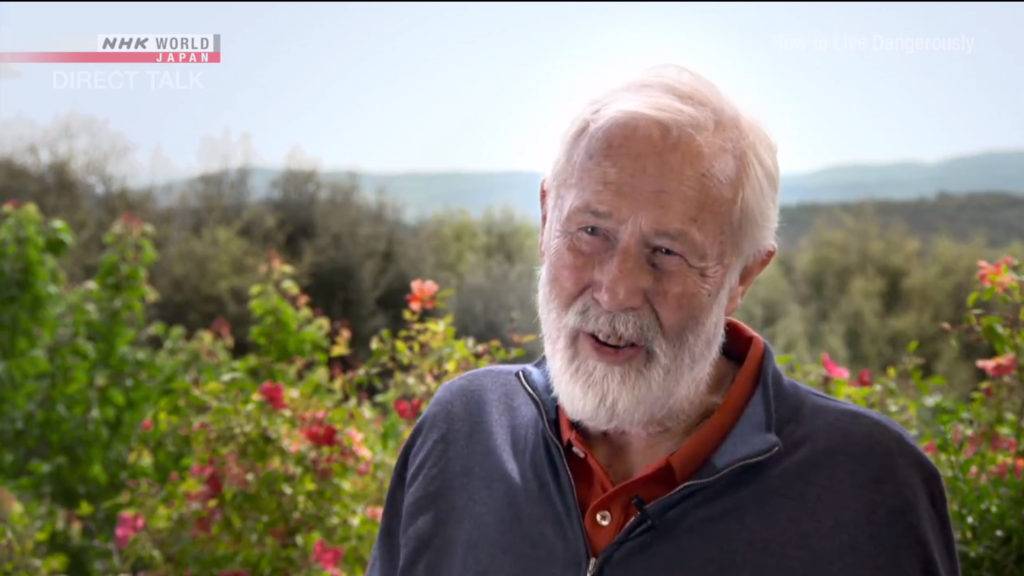
When I was a teenager and young adult during 1960s and 1970s, one of my heroes was Sir Christopher Bonnington, the British climber and leader of Himalayan expeditions. He finally quit climbing at age 80. He is still one of my heroes at age 85. The first half of this 15-minute video by NHK, the national broadcaster of Japan, focuses on life and the second half on his advice about the strategies and tactics of how to lead teams of headstrong individuals amid high risks.
Comment of Real Expertise
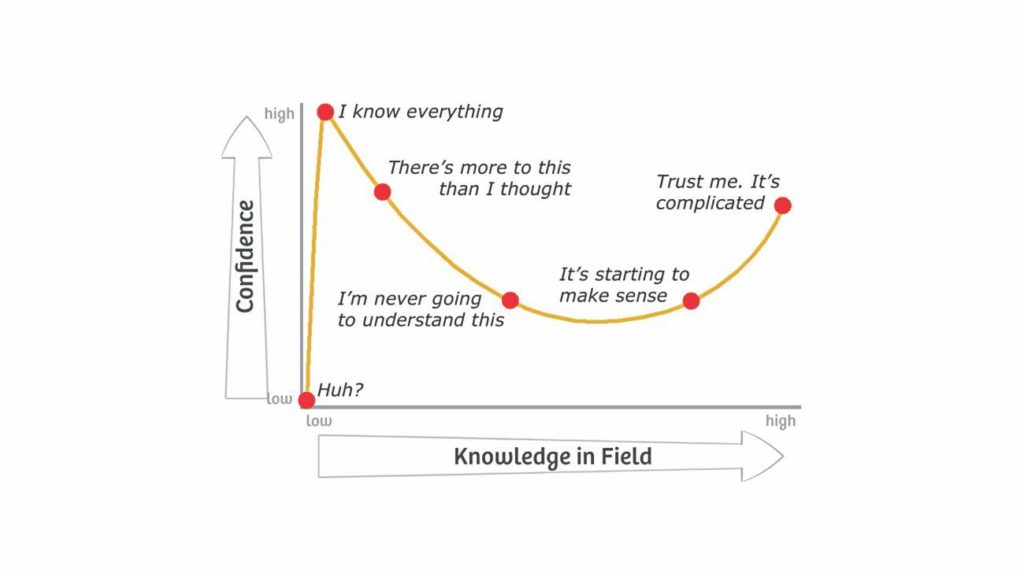
For nearly 15 years, a loose confederation of New Media pundits who I’ll call ‘techno-utopians’ claimed that because average people can now express themselves online, free of moderation by media companies, the quality of public discussions would improve and the best ideas rise to acclaim. Yet the reality has been quite different than that.
he reason why it’s different is the results of what psychologists term the Dunning-Kruger Effect in which too many average people believe their cognitive ability and wisdom is as great, and often greater, than experts about the topic being discussed. A truly intelligent average person will defer to established expertise because it is almost always arduously gained from first-hand knowledge and deep experience. By contrast, the less intelligent a person, the more dumb and unaware he is of what actual expertise entails. He will too often believe that his own opinions about the topic discussed are equal, or even superior, to those of experts’. (The very worst cases of this moreover can be motivated or reinforced by resentment he might feel against experts or other classes of people who’ve achieved more in their careers than he has his.)
The overall result is that the participation of so many of the dumber and unaware average people in online public discussions has not just lowered the levels of discourse but too often spewed smogs of miasmic discord and disinformation into those discussions. Unwitting Techno-utopians be damned!
As the American biochemist and author Isaac Asimov remarked during 1980, “The strain of anti-intellectualism has been a constant thread winding its way through our political and cultural life, nurtured by the false notion that democracy means that ‘my ignorance is just as good as your knowledge.’ ” His remark was about his own nation, but is no less true throughout the online world 40 years later.
In social media, I am becoming apocalyptically weary of American plumbers who can expertly unclog a drain but who also purport to have expertise about the macro-economic impact on the EU of BREXIT; of used beer wholesalers who profess Constitutional law expertise; of used car salesmen, who though themselves untraveled, offer insights into the comparative structures of national healthcare systems here and abroad. Et. al. I’ll willingly accept their respective expertise about pipe water flow capacities, about alcohol-by-volume levels of brews, or about the suspension systems of 2003 Toyotas, but not about topics about which they don’t have any actual expertise. What most of them instead are doing is merely parroting the words or talking points of pundits, propagandists, or someone else they’ve recently met and liked.
Spare me! Would you prefer the expertise of a professional pilot in the cockpit when next you board an airline or that of a traveling salesmen? The expertise of someone who has culminated 20 years of continuous education and hands-on experience being certified as a licensed doctor or a greeter at Wal-Mart who likes to google medical information? To live in a high-rise apartment designed by a licensed architect trained in the science of load-bearing materials or a roofer who’s also part-time lifeguard at the beach?
If you’ve an opinion about a topic, offer it if you’ve actual experience and expertise. Otherwise, would you please wisely stay out of the way.
Cathedral
An aerial tour of the Catedral de Santa Ana, which is located in the Vegueta neighborhood of Las Palmas de Gran Canaria, the major city on Gran Canaria in Spain’s Canary Islands off the coast of northwest Africa. This eight-minute video was simply an early flight test of the drone. Because they were manually done, it’s camera movements are a bit jerky. The drone flight and editing (including addition of titles and music) was done on Samsung Galaxy 7 smartphone. A test of some simple equipment.
Rooftops on a Cloudy Day in Las Palmas de Gran Canaria
My first extended drone video. From atop one of our house in the 16th Century neighborhood of Vegueta in my wife’s native Las Palmas de Gran Canaria, Canary Islands, I launched my Mavic Air (which is small enough to fit into a jacket pocket) up to 100 meters (328 feet); panned it three or four times around; then let it automatically land itself. This eight-minute video was shot in HD format rather than using the drone’s full 4K capability. It was a rare cloudy day.
Roiling Stormfront

‘Kesari’
Thanks to streaming video websites such as Netflix, Amazon Prime, and the Criterion Channel, I’m enjoying many of the best films in the world, not just those few available at my local ‘art house’ cinema. Last night’s was Kesari (‘Saffron’), this year’s Bollywood film about the 1897 Battle of Saragarhi, in which 21 Sikhs fighting for the British Raj held off 10,000 to 12,000 Afghan warrior attacking their small fort. As an American, I wasn’t aware of that battle, for which all 21 Sikhs were posthumously award the Indian Order of Merit, that nation’s equivalent of the British Victoria Cross or American Medal of Honor. Kesari, is one of this year’s top ten box office films in India, is reminiscent of other ‘hopelessly outnumbered’ war films, such as the 1964 film Zulu (starring Michael Caine in his first major role) about the 1879 Battle of Rorke’s Drift (150 British soldiers vs. 4,000 Zulu warriors) or the 1962 film The 300 Spartans or 2007 film 300, both of which were about the ancient Battle of Thermopylae (in reality a few thousand Spartans against 70,000 to 100,000 Persian warriors). Good war film, yet with a minor romantic subplot. (And being a Bollywood film, at some point in the 21 Sikhs must dance and sing!) Starring the Canadian Akshay Kumar, India’s highest-paid actor, the fourth highest-paid in the world. Available on Netflix, in Hindi with English-subtitles.




